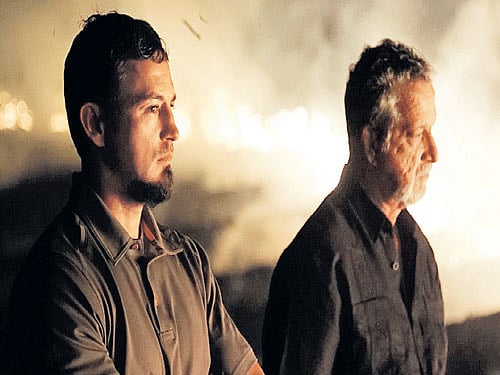
A bayou in Louisiana, a re-opened case and a slew of sinister suspects can be the perfect ingredients for a thrilling television show. But what makes Killing Fields, a true crime docu-series on Investigation Discovery Channel special is the fact that this show is played out in real time. It is an active investigation that allows an audience to get a ring-side view of how detectives work on a case.
This TV series follows a team of homicide detectives as they reopen the case of a young woman, who went missing, and was later found dead in the Louisiana swamp lands. This region, aptly called Killing Fields, is a body dumpsite, as the forces of nature often erase evidence of a crime. The crime was not solved at the time, but after many years it is reopened, and a team of detectives is called to work on the case once more.
Solving crimes
In an exclusive interview with Detective Aubrey St Angelo, one of the main investigators in the series, who is now working with Iberville Parish Sheriff’s Office Criminal Investigation Division, he explains that he deals with all kinds of cases ranging from burglaries to homicides. When asked whether he always wanted to be a detective, Aubrey says, “I wasn’t interested in becoming a detective. I always thought I would be a patrol officer, but my aggressive nature and my accomplishments led me into different promotions. I’ve had different opportunities to take upon different endeavors within the department and that has led me into investigations as of today.”
Aubrey started his career in law enforcement at the age of 18, in the narcotics unit, before transferring to Iberville Parish Sheriff’s Office Criminal Investigation Division. Aubrey likes to say that his best skill as a detective is his “ability to read people” and he is often seen “as a stoic and tough guy”. According to him, a crime always leaves some evidence behind. “In my 19 years of experience, I do not believe that you can commit a perfect crime because you’re breaking the rules, so you’re going to leave some type of forensic evidence behind,” he says, adding, “This evidence can be analysed later as crime doesn’t happen in a vacuum. When you commit a crime it’s open for anybody to catch a little piece of evidence.”
The case that is depicted in Killing Fields dates back to 1997. Detective Rodie Sanchez was the first investigator assigned to the case, but it was not solved at the time. Rodie later came out of retirement many years later to work on the investigations when the case was reopened. Aubrey and many other detectives in the Iberville Parish Sheriff’s office were also assigned to work on the case. When asked why the case had not been solved in 1997, Aubrey replies, “Based on what I’m learning from the older detectives, manpower was an issue at that time, and they were overwhelmed with an influx of investigations. As their leads ran out, the case went cold and that’s why it wasn’t solved that year.”
A cold case
Aubrey adds, “I had no idea that I would be investigating this crime. Whenever I was approached and told that office would be reopening a cold case, I understood that there would be filming involved. I actually did not want to be a part of any filming. I didn’t take this profession for entertainment, rather I took it up as a service. I was informed that cameras would be around and later I accepted the opportunity, brought my tools of trade on the table and proceeded.”
As to how difficult it was to work in front of a camera while on investigation, Aubrey replies, “It was not that difficult to work with cameras as the camera-men were courteous and they really helped us. At times I learned what was more convenient for the camera and helped them set up the equipment.”
When asked how many cold cases have a chance to be eventually solved, Aubrey replies, “I think every case has an opportunity to be solved. It is based really on the department itself. I know just recently that a local department has established a strictly cold case unit which gives them the time to open up cold cases. Our department does not have a main cold case unit but this is an opportunity that was given, and based on our case load, we go back and revisit the case as the opportunity presents itself or as leads develop with the case. And as far as them getting solved, with the way technology is advancing, I have been getting a lot of good feedback about how these type of cases are being solved now versus back then.”
When asked what his hardest challenge in this case has been, Aubrey says, “The biggest challenge faced in any cold case is time. Time is of essence in all the cases, and we never realise how much time we waste without knowing its importance. Time was a beast in this cold case, as it wiped away evidence that would have been useful. One person we had to interview moved to Hawaii, which was considered one of the major problems in solving this case.”
It is the edge-of-the-seat moments in this much-acclaimed docu-series, Killing Fields, and all the excellent police work that goes into the investigation of a crime that will hold the viewer in its grip through every episode. Killing Fields will be aired on Investigation Discovery Channel from April 17 onwards, at 8 pm, every Sunday.
